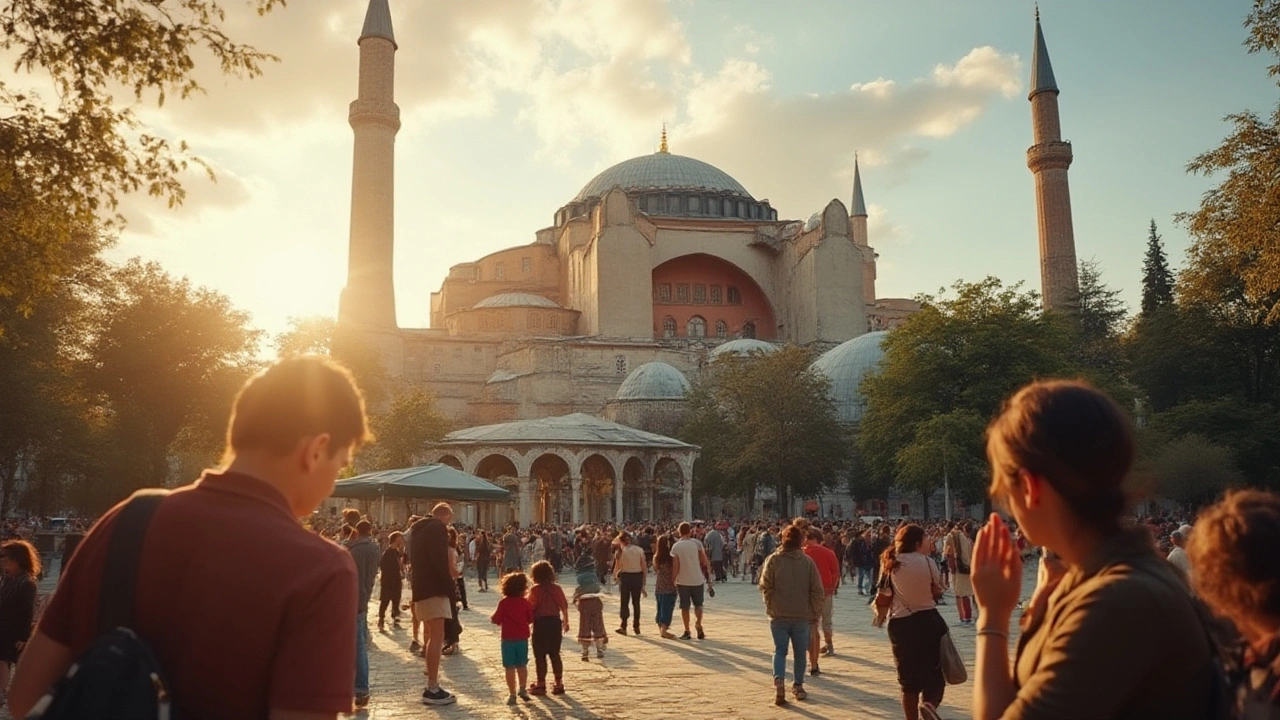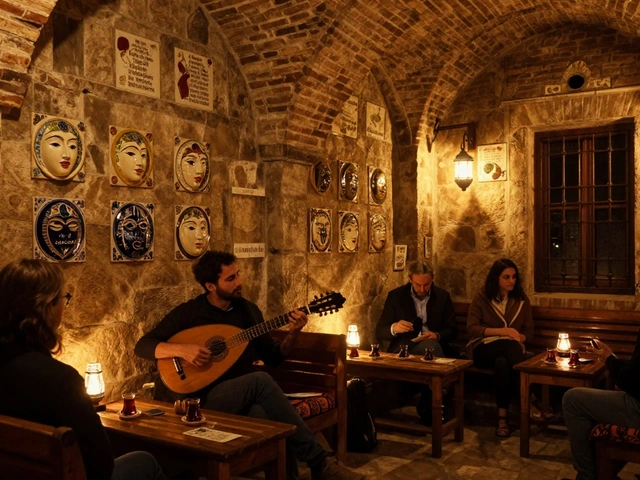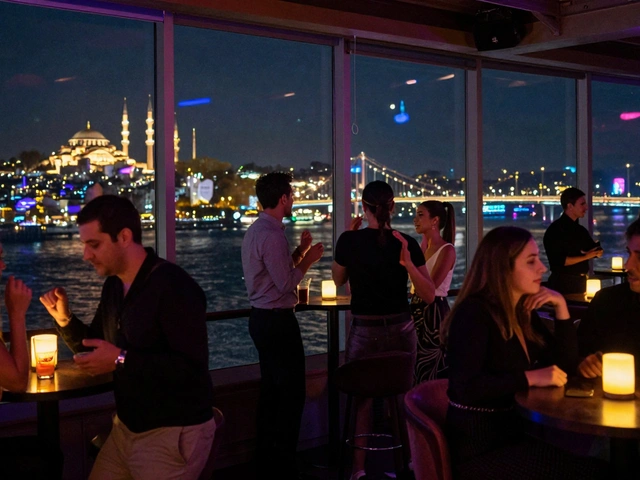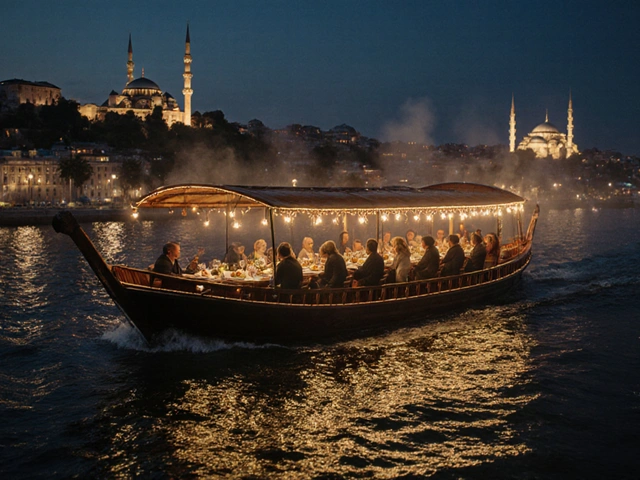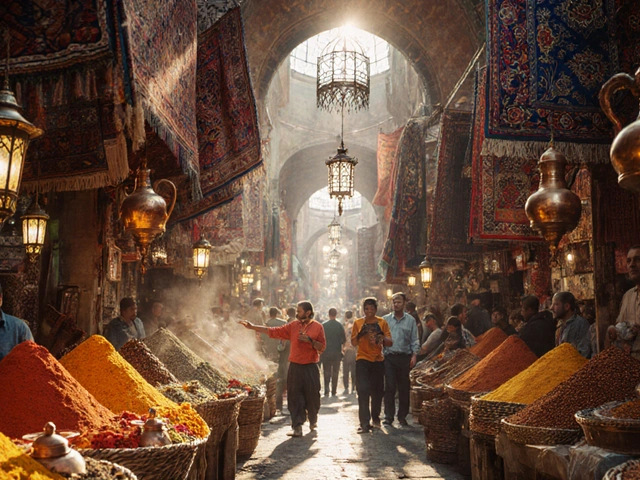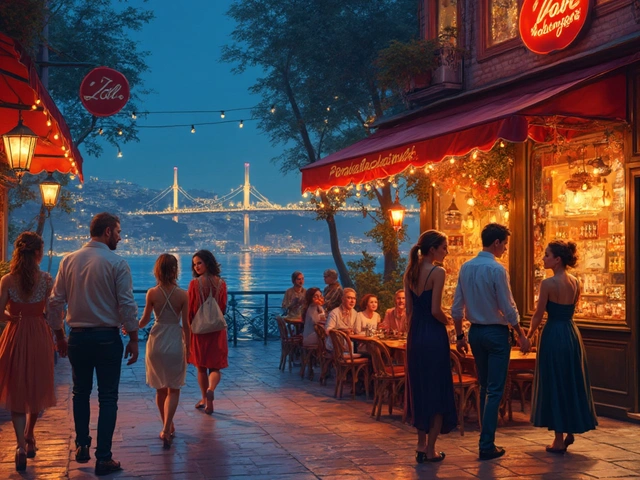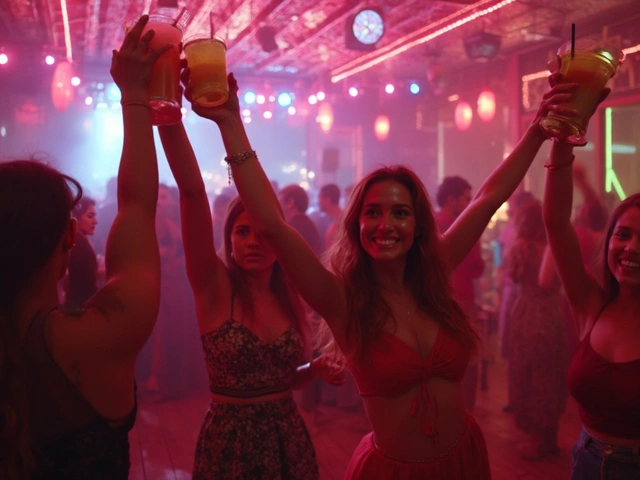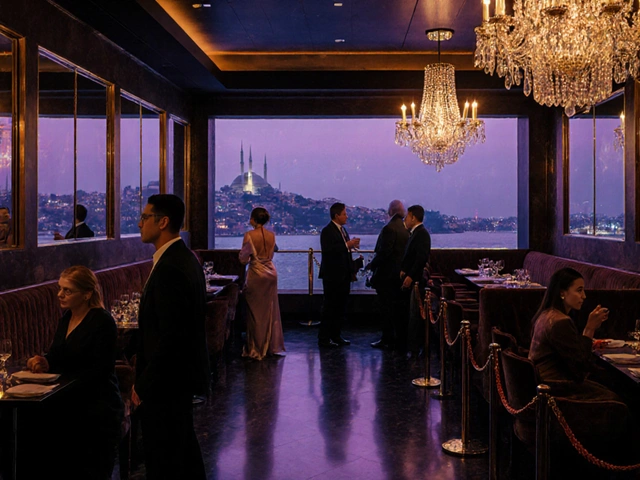If you live in Istanbul or even just pass through now and then, you know this isn’t a city you can sum up in a single sentence. There are layers here—some hidden in plain sight—and if you only stick to the usual tourist spots, you’ll miss what really makes this place tick.
The real Istanbul experience starts when you ditch the guidebook and start looking for stories on your own street corner, in your regular coffee place, or while squeezing through a crowded market in Kadıköy. Locals know the feeling: it’s the call to prayer mixing with the ferry horns, the glow of simit stalls at 7 AM, the swirl of conversations in three languages at your favorite meyhane.
So what turns “living in Istanbul” into a truly transformative cultural experience? It’s not just the Hagia Sophia or the Grand Bazaar. It’s how you learn to order the perfect çay, find the freshest fish in Karaköy, spot a neighborhood festival that you’d never have heard about if you didn’t know someone from Balat. It’s understanding how to read the energy of a district—how Nişantaşı wakes up differently from Moda, how Cihangir buzzes in the evenings.
Getting involved isn’t about big gestures. Sometimes it’s buying tulips from a street vendor in Emirgan rather than at a chain shop, or striking up a chat with the lady who’s been weaving kilims in Sultanahmet since before you were born. Istanbul rewards curiosity and a bit of confidence. You’ll be surprised how easy it is to plug into this city once you start looking with intent.
- Getting Lost in Istanbul’s Neighborhoods
- The Magic of Turkish Food Culture
- Local Arts, Crafts, and Traditional Workshops
- Festivals and Major Cultural Gatherings
- Everyday Rituals That Shape City Life
Getting Lost in Istanbul’s Neighborhoods
You can’t really understand Istanbul culture until you walk through its neighborhoods without a plan. Each area has its own quirks, locals, and tiny surprises. Wander through Fener and Balat and you’ll bump into streets lined with pastel houses, locals chatting on steps, and cafés where grandmothers make fresh börek by hand. A quick turn can lead you from an Orthodox church to a bustling mosque, showing just how mixed-up and real Istanbul is.
If you head to Kadıköy on a Saturday morning, be ready to shuffle through busy markets with everyone from students to old folks buying cheese from the same shop families have run for decades. Moda, just a short walk away, feels way more chilled out, filled with indie music spots, hidden bookshops, and the occasional open mic. Want something modern? Nişantaşı has brand-name stores, but if you take a wrong turn, you might find tiny art galleries and old shoemakers that survived Istanbul’s massive changes in the last ten years.
"Every corner of Istanbul tells a different story—if you want to know the city, you have to be ready to get lost," says Eda Yüce, urban researcher at Boğaziçi University.
Beyoğlu’s Istiklal Street is touristy, yeah, but try sidestreets like Asmalımescit for the best late-night food after a concert. In Karaköy, the old workshops now sit next to craft beer bars. What never changes is the energy—these zones never feel fake or staged.
- Balat: World-famous street art and antique shops (Instagram hotspot, but locals actually live here!).
- Çukurcuma: Best for vintage finds—if you want real Ottoman lamps, this is the place.
- Moda/Kadıköy: Ferries linking Asia and Europe, with great sunset views and cats lounging everywhere.
- Beşiktaş: Go early for breakfast spots near the pier, and later, street food around Dolmabahçe.
- Nisantasi: Fashion lovers’ favorite, but with secret bakeries on tiny streets.
Here’s some actual tech that can help: Google Maps’ “Explore” feature is handy, but Istanbul’s local app, BiTaksi, makes it easier to get back when you’re done wandering. And if you end up in Fatih without a bus card, ask a shopkeeper and they’ll usually point you to a kiosk or loan you theirs.
| Neighborhood | Main Draw | Rating (Local Survey, 2024) |
|---|---|---|
| Balat | Historic streets & local bakeries | 9.2/10 |
| Moda | Cafés & seaside sunset | 8.7/10 |
| Beşiktaş | Pier, breakfast, nightlife | 8.9/10 |
| Karakyöy | Merging old and new vibes | 8.6/10 |
If you want to really connect with the city, pick a neighborhood, leave your phone in your pocket, and just see where your feet take you. That’s when the best stories happen.
The Magic of Turkish Food Culture
If you really want to get under the skin of Istanbul, you’ve got to eat like a local. Food isn’t just fuel here; it’s a huge part of daily life and social connection. When you’re talking about Istanbul culture, food has its own language, rules, and rituals.
Breakfast (kahvaltı) goes beyond bread and cheese. A classic Turkish breakfast can stretch over an hour, usually with endless tea and plenty of small plates—think olives, tomatoes, cucumbers, cheeses from across the country, honey-and-cream (bal kaymak), boiled eggs, and fresh simit. Try somewhere like Van Kahvaltı Evi in Cihangir for a feast that locals line up for, especially weekends.
Street food is basically a citywide obsession. You haven’t tasted Istanbul until you’ve grabbed a dürüm kebab on Istiklal Caddesi at midnight, snagged a paper cone of midye dolma (stuffed mussels) from a Bostancı vendor, or munched on roasted kestane (chestnuts) just outside Eminönü Metro. These snacks are more than quick bites—they’re part of the city’s shared memory.
The city’s food markets give you a crash course in what’s fresh and what’s in season. Kadıköy Market on the Asian side is packed with locals almost every morning, hunting for the best produce, specialty cheeses like Ezine, and spicy olives. Here’s a quick look at what’s popular by season:
| Season | Market Specialty | Where to Find |
|---|---|---|
| Spring | Green plums (erik), artichokes | Kadıköy, Beşiktaş |
| Summer | Cherries, watermelon | Karaköy, Üsküdar |
| Autumn | Figs, roasted pumpkins | Fatih, Bakırköy |
| Winter | Citrus fruits, mussels | Kadıköy, Eminönü |
When it comes to eating out, meyhanes (taverns) are where the city comes alive at night. These spots are best for sharing meze (small dishes), sipping rakı, and maybe joining a spontaneous singalong. Nevizade Sokak in Beyoğlu is famous for its lively tables and a mix of locals and regulars from all over the city.
For a quick food adventure, try these tips:
- Order şalgam (fermented turnip juice) with your kebab—locals swear it’s the best combo.
- Always ask what’s fresh that day, especially in fish restaurants along the Bosphorus. If it’s hamsi season (November to February), don’t miss out.
- Skip chain cafés and look for traditional börek shops in your own mahalle (neighborhood). You’ll discover each one has a slightly different recipe.
- If you’re invited for homemade mantı (Turkish dumplings), cancel your other plans. This is comfort food at its best and usually a sign you’ve become part of someone’s inner circle.
Food tours can get a little touristy, but there are some solid options if you want the low-down from locals. Culinary Backstreets does detailed walking tours, and some Istanbul-born foodies (like @istanbuleats on Instagram) often share up-to-date scoops on hidden gems in different districts.
Bottom line: in this city, mealtime is never just about what’s on the plate. It’s about the company, the neighborhood, and joining a tradition that’s always evolving but never loses its soul.
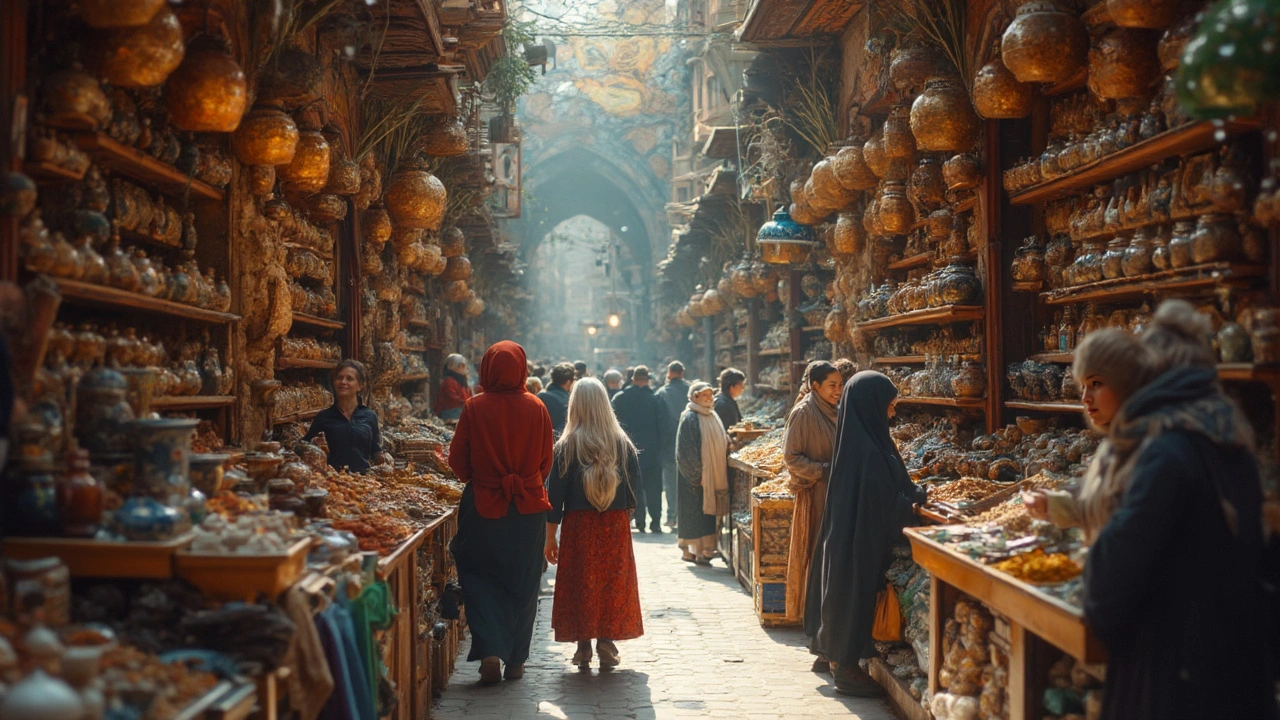
Local Arts, Crafts, and Traditional Workshops
If you want to really understand Istanbul culture, roll up your sleeves and try something hands-on. This city is packed with workshops where you can make traditional crafts—think ceramics, marbling (that’s called ebru here), calligraphy, or even Ottoman-style jewelry. You don’t need to be an artist; most classes cater to beginners and provide everything you need, including a relaxed, friendly environment.
One of the most popular places for learning ebru is the Caferağa Medrese near Sultanahmet Square. Built in the 16th century, it’s now a center full of artists and teachers. I spent an afternoon there once and barely realized time had passed. You sit down with a tray of pigments, swirl colors in water, and watch a unique pattern form under your brush. It’s surprisingly meditative.
If you’re into pottery, try the Kutahya Ceramics workshops at the city’s larger art centers—like the Istanbul Design Center or the Rahmi M. Koç Museum. Here, you’ll see how those gorgeous tiles that decorate mosques and old houses are made. And most sessions end with you glazing and firing your own piece to take home, so you don’t just get a souvenir, you make one.
Textile buffs should not miss the weaving classes in Balat or the rug-making demonstrations in Sultanahmet, many of which are put on by small family-run shops. Ask for a demonstration at Galeri Sirvan or visit the Istanbul Handicraft Center for a full-on weaving experience. You’ll see firsthand how those iconic Turkish rugs are still crafted by hand, sometimes over months.
For anyone who likes to get straight to the source, the Grand Bazaar isn’t just for shopping. There are artisans who’ve had family stalls here for generations—watching a silversmith at work or seeing a copper workshop in Beyazit is a whole experience by itself. If you’re curious, ask if you can watch for a while. Most craftspeople are happy to share the story behind their art if you show real interest.
If you want to check for live workshops or temporary events, keep an eye on platforms like ATÖLYE Istanbul, Yabangee (great for expats and English speakers), or even Instagram accounts for places like Kolektif House or Bomontiada. They regularly host combo events like art, short courses, food workshops, and music jam nights where locals and newcomers mix.
"Istanbul’s craft culture is about keeping heritage alive, one handmade bowl, tile, or brush stroke at a time,” says Mert Özdemir, founder of the modern arts initiative ArtOn Istanbul.
The energy in these spaces isn’t stiff or museum-like. It’s more like an open invitation to jump in, experiment, and swap stories. Even if you only have an afternoon, these workshops give you a new angle on Istanbul—plus a skill or souvenir you won’t find in any regular shop.
Festivals and Major Cultural Gatherings
Istanbul is a festival machine—there’s almost always something happening. Some events draw in thousands, even a few million, and even locals who say “not this year” usually end up checking out at least one.
If you love live music, Istanbul Jazz Festival in July is a big deal. Artists from around the world, and tons of Turkish talent, take over parks, open-air stages, and historic spots like Cemil Topuzlu Harbiye Açıkhava Tiyatrosu. Tickets for top shows sell out, so get them early—sometimes you’ll score last-minute seats by walking up on the night.
For film buffs, look out for the Istanbul Film Festival every April. Most screenings are at cinemas in Beyoğlu and Şişli. This is where you’ll watch Turkish indie films before they show up anywhere else, and the festival also brings in international directors for Q&As (tip: pick weekday day sessions for smaller crowds).
If cıty-wide celebrations are your thing, Republic Day on October 29 is hard to beat. Streets all over the city are packed with parades, live concerts—especially on İstiklal Street—and a firework show along the Bosphorus that honestly looks amazing whether you’re on land or catching a ferry.
There’s also the Istanbul culture boost from free events. The Istanbul Tulip Festival in April turns Emirgan Park into a rainbow of 30 million tulips. Local councils like Kadıköy Belediye organize street art festivals and open-air theatre in summer, and if you follow their social media you’ll get all the schedules without any guesswork.
- Ramazan: Watch for giant iftar dinners in Sultahahmet or Üsküdar. Anyone can join—just turn up hungry near sunset and bring small change for a donation.
- Biennials: The Istanbul Biennial (contemporary art) and Design Biennial usually mean free exhibition openings, artist talks, and workshops. Locations are all over: from cool old warehouses in Karaköy to seaside mansions on the Asian side.
- Book Lovers: The Istanbul Book Fair every autumn—held in Büyükçekmece—is packed with readings, new releases, and cheap book catches. Bookstores like Minoa and Mephisto often host tie-in events too.
Here’s a quick look at how some annual events stack up for crowd size and citywide buzz in 2024:
| Event | When | Est. Attendees | Main Area |
|---|---|---|---|
| Istanbul Jazz Festival | July | 50,000+ | Harbiye, parks |
| Istanbul Film Festival | April | 70,000+ | Beyoğlu, Şişli |
| Istanbul Tulip Festival | April | Hundreds of thousands | Emirgan, Gülhane |
| Republic Day | October 29 | Millions | Bosphorus, Taksim |
If you’re moving here or just want the inside track, follow Instagram pages like @istanbulsenin, @caddebostanevents, and check the websites of event venues (like Zorlu PSM or Babylon). Most events are family-friendly, but for the big concerts or National Day, public transport is packed—always load your Istanbulkart in advance. Oh, and if you want absolute local color, try neighborhood street festivals in Kuzguncuk, Moda, or Balat—these are usually run by small co-ops and feel super welcoming, with homemade food and live acts from the community.
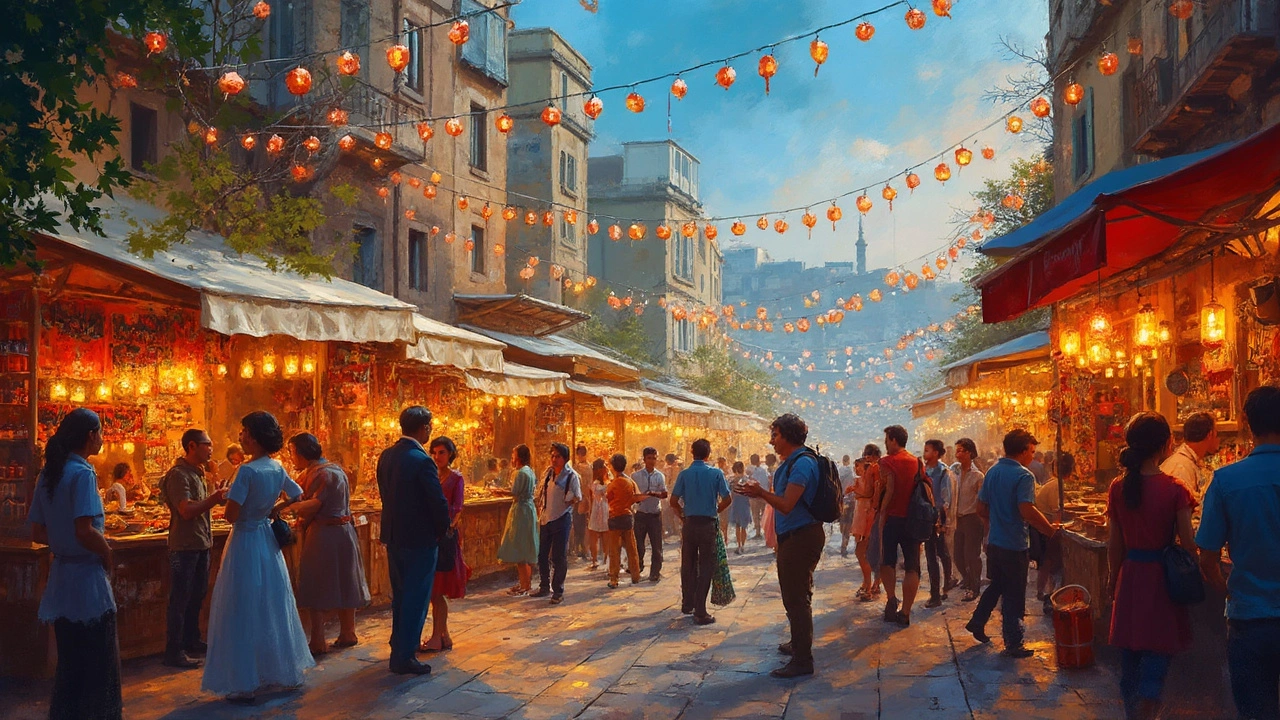
Everyday Rituals That Shape City Life
What makes Istanbul’s culture stick isn’t some huge festival or historic landmark—it’s the daily habits you’ll spot on every street. Some of these routines surprise newcomers but feel second nature to locals. The best way to start understanding the city’s rhythm is by noticing what people actually do, morning to night.
Take the daily rush for breakfast. Simit—those sesame-crusted bread rings—are basically an Istanbul icon. You’ll see sellers pushing carts by the Bosphorus as early as 6:00 AM. Most Istanbul residents grab their simit with feta, tomatoes, and a hot tea. Fun fact: Istanbulites consume around 3 million simit rings a day. That’s some serious carb devotion.
The tea (‘çay’) culture runs deep. You don’t need a menu—just a small tulip-shaped glass, always served strong and never with milk. They say there are about 700,000 tea houses in Turkey, and every neighborhood has its favorite. If you’re invited for çay, don’t say no. That’s like turning down a handshake. A lot of deals (and gossip) go down over tea in places like Çemberlitaş or Beşiktaş cafes.
Street cats and dogs are part of daily life too. Istanbul residents show up for the city’s animals, often leaving out water and food bowls. You’ll see small shelters constructed from scrap wood near ferry ports or in neighborhood parks, many built by locals. Some official stats from Istanbul’s municipal government:
| Ritual | Estimated Daily Participation | Unique Fact |
|---|---|---|
| Simit eating | 3,000,000+ | Simit was first sold from boats in the 1500s on the Bosphorus. |
| Tea drinking | Approx. 245 million glasses | Turkey has the highest per capita tea consumption in the world. |
| Feeding street animals | City-wide, thousands daily | Istanbul hosts over 125,000 registered street cats and 80,000 dogs. |
Another big part of daily life is the evening “muhabbet” — basically, long, chatty hangouts usually fueled by Turkish coffee or meze plates. This isn’t just about eating; it’s where friendships and business ties grow stronger. If you live here, you’ll eventually get pulled into these relaxed, hours-long conversations.
If you want to feel like a real local, join in on a walk down Bagdat Street at sunset or sit along the Moda waterfront with snacks. People-watching is a sport and also a way to pick up on the city’s unspoken rules. These everyday experiences show why Istanbul culture is less about the glossy stuff and more about little things you learn just by paying attention.


